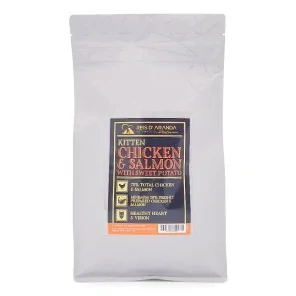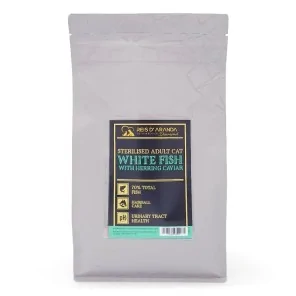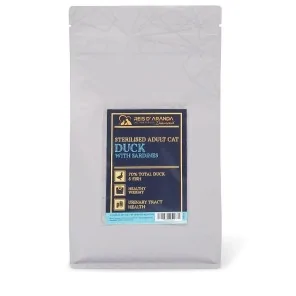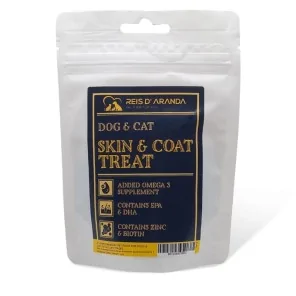The Tornjak originated from genetically homogeneous, almost extinct, indigenous shepherd dogs. These dogs have...
THE PERSAGEAN CAT
THE ORIGIN OF THE PERSIAN CAT
The Persian cat is one of the oldest and most popular cat breeds in the world. Its origin can be traced back to Persia, the region now known as Iran, where it is believed that these cats developed several centuries ago.
This cat was highly prized in ancient Persia for its beautiful long coat, elegant appearance and sweet, melodious voice. For centuries, they were bred by the royalty and wealthy people of the region, which contributed to their propagation and preservation.
Although the exact origin of the Persian cat is not fully documented, it is believed that they were exported to Europe in the 16th century, where they quickly gained popularity due to all the aforementioned virtues. In the 19th century, breeders in England began to develop the Persian breed as we know it today, breeding cats with specific characteristics such as a round head, short muzzle and a distinctive appearance that makes them easily recognisable.
Since then, the Persian cat has been one of the most loved and admired cat breeds in the world. Their long, dense fur, as well as their calm and affectionate temperament, have made them beloved companions for many people.
Today, the Persian cat is recognised by the major international cat breeders' associations such as The International Cat Association (TICA), which recognises and registers Persian cats that meet its breed standards in its competitions and shows, The Cat Fanciers' Association (CFA), where the Persian breed is one of the most popular breeds in CFA competitions and shows, but also the Fédération Internationale Féline (FIFe), which gives recognition to Persian cats in its events and competitions.
WHAT IS THE PERSIAN CAT LIKE?
What does a Persian cat look like and what should a Persian cat be like?
The ideal Persian should give the impression of a well-balanced cat, very heavy boned, with a gentle expression, smooth and rounded contours, large, bright, round eyes set wide apart, large round head, short broad neck, broad chest, short legs, bushy tail, short but in proportion to the body, contributing to the overall look of the cat. The adult weight of the Persian cat ranges from 3kg to 5.5kg.
The long, dense coat softens the cat's contours and contributes to the rounded appearance. Fine-textured, airy and full of life, long all over the body.
The overall impression of the Persian cat is that of a medium to large sized animal, with a robust, solid body and a very long coat. Its facial expression should show its aristocratic bearing and majestic nature. More than any other breed, the Persian's face is very variable. It can range from the more traditional type to extremely flattened. The nose is very small, short and high, i.e. broad and with a well marked stop.
The head is large and round, with small, round-tipped ears measuring between 4 and 6 centimetres. It is desirable that the head can be inscribed in a square and the ears are set almost sideways. Round, massive, domed. Set on a short, strong neck. Skull broad and round.
THE PROFILE OF THE PERSIAN CAT MUST BE STRAIGHT, THE NOSE "TUCKED INTO THE SKULL" IS VERY, VERY PENALISED AND IS INCORRECT.
It must be said that the definition of the Persian cat depends a little bit on the different international cat associations, CFA, ASFEC, WCF, etc. For example, in CFA when they refer to Persian cat they mean that in the pedigree of that cat are Persians at least since ten generations ago and if it is not so they consider that it is an exotic cat with long hair (Long Hear or LH). Other associations do not make this distinction and simply qualify them as Exotic Shorthair and Persian Longhair.
The eyes of the Persian cat are large and lively, very striking in appearance and should not be too close together or close to the nose. Three iris colours are recognised and are associated with the coat colour.
- ORANGE (COPPER): Found in most coats.
- GREEN: Shaded mantles, chinchillas, silver and golden.
- BLUE: In white coats (not all) and ALWAYS in Himalayas.
In the colour patterns we can find two different terms:
- SOLID AND DILUID: The colours can be solid (black, chocolate, red ...) or diluted (blue, lilac, cream), tortoiseshell (Combination, mixture of flakes of indefinite form of black or chocolate or lilac ... with red or cream), bicolours, tricolours (all colours in combination with the white colour in a certain combination, like the VAN, the ARLEQUIN, CALICO). But each of the cat's hairs is of the same colour from root to tip (monochrome) without any pattern.
- SINGLES AND SMOKES: One part of the coat of this group of Persian cats is unpigmented and the other part is coloured. According to the proportion of these parts, the Persians are distinguished as Shell (or Chinchilla), Shaded and Smoke.
In the colours of the Persian, we find the following:
- SOLID AND DILUID SINGLE COLOURS: White, Black, Red, Chocolate, Cream, Blue, Lilac.
- OF VARIOUS COLOURS:
-BICCOLOUR: White covers 30 to 50% of the body. Colours may be black, blue, chocolate, lilac, red, cream, blue tortoise, chocolate tortoise, lilac tortoise.
-HARLEQUINS: White covers 50 to 75% of the body.
-VAN: The whole body is white except the tail and the hood which covers the eyes and the base of the ears. Colours may be black, blue, chocolate, lilac, red, cream, blue tortoise, chocolate tortoise, lilac tortoise.
-TRICOLOUR: Combination of 3 colours, one of which is white. There are federations that call them "particolor". And others the "particolour" is the generalised name of the bicolour, tricolour and tortoiseshell. - "TIGERS" FAMILY: Tabbies, mottled, mormolejat: All these combinations can also be found with tabby patterns (mackerel, Blotched and spotted), called "peat"; with smoke coats; and with silver tabby coats (where the base coat is silvery white). The colour of the eyes can be, in the case of the varieties and harlequin: blue, copper, one eye of each colour ("odd-eyed"). For the other two-coloured cats, copper colour only.
THE HEALTH OF THE PERSIAN CAT
The Persian cat is one of the best known breeds in the world for its distinctive appearance and great personality. Unfortunately, like all breeds, the Persian cat is prone to diseases and health problems, that is why it is very important to carry out a responsible breeding and a good genetic selection, performing all the health tests available in the market before making a crossbreeding.
Therefore, in this article we are going to analyse how common diseases affect the Persian cat and we will tell you about their symptoms and possible treatments so that you know how to give your furry companion a full and healthy life.
- RENAL POLYCYSTOSIS: Polycystic kidney disease is a hereditary disease that affects the kidneys causing the formation of cysts, being hereditary, genetic selection is essential. It does not give symptoms until it is very advanced and has no cure, only palliative treatments; the symptoms are as follows:
Pain
Loss of appetite
Changes in behaviour
- RESPIRATORY DISEASES: The Persian is a brachycephalic breed (its skull is shorter than its width), so a bad selection can produce diseases such as chronic rhinitis (which is multifactorial, as a dusty environment or an excess of urine gases and allergies can cause them, whether the dog has brachycephaly or not). In brachycephalic breeds ethical breeders perform the BOAS test, which indicates which brachycephalic animals can or cannot be bred. This test is compulsory in several national and international clubs, as the welfare of the animal is sought while maintaining its physical characteristics.
- EYE DISEASES: Persians are prone to eye diseases, whether hereditary or not, some of which are as follows and most have to do with the care given by the owner:
1. ENTROPION: In this case it is congenital and is due to an excess of skin in the eyelid area which causes the eyelids to turn in and the eyelashes to get into the eye frequently, causing itching, pain and in some cases infections and ulcers due to rubbing. It is solved by undergoing surgery.
2. ULCERS: Ulcers are lesions on the cornea due to blows, scratches or infections. They are painful and their severity varies according to their depth. Most of them are solved with eye drops and healing creams based on vitamins, in the most serious cases they end up causing blindness.
3. DRY EYE SYNDROME: Dry eye syndrome occurs when the eyes do not produce enough tears to keep them moist or when the tears do not do their job properly. This can cause discomfort in the eyes and, in some cases, can also cause vision problems. It is chronic and artificial tears should be applied daily.
4. EXCESS TEARS: Excess tears occur in both brachycephalic and non-brachycephalic breeds and animals, when the tear duct is blocked and the tears come out of the eye (instead of through the nose) and wet the coat and oxidise it, if not dried or treated it can cause bad smell (as the coat rots) and dermatitis, as well as being unsightly.
5. DERMATOLOGICAL PROBLEMS: As in all long-haired animals, if the owner does not take care of the Persian cat's coat, it will knot and accumulate dead hair, which will cause the skin not to breathe and produce dermatitis (dry or wet), wounds, itching and, in the worst cases, necrosis when the hair strangles the most sensitive areas, such as the tail, wrists and ankles.
6. HEAT BURNS: If our cat is full of knots, the skin will not breathe and the fur will also create a thick and hard blanket on the skin which will make it hotter, so we can lose our cat in a terrible way that can be prevented. We must also give him a good hydration (water and wet cans), and allow him to have a cool place to shelter in summer, such as the bathroom.
GROOMING THE PERSIAN CAT
The Persian cat needs several daily cares to keep its coat healthy and beautiful, otherwise it can develop different health problems (as we have mentioned before). The quality of the coat is influenced by several things: genetics, food and care. If our cat has poor genetics, no matter how much we look after it or even if we give it the best food, the coat may be poor, excessively fine or woolly, which will make it difficult to look after.
Here, we are going to focus on grooming.
It is very important to get our Persian cat used to being brushed from an early age and to enjoy baths and the hairdryer, as this will be something he will have to do throughout his life.
- BRUSHING: Brushing is very important, we will use a metallic brush to remove the dead hair together with a combing spray that will hydrate the hair and will avoid its breakage, we will NEVER brush the hair dry, because we will break it and it will get more tangled later. After removing the dead hair, use a butter brush from root to tip, carefully, paying attention to the most difficult areas such as the neck, chest, belly and buttocks. Brushing should be done daily.
- BATH: This should be done every two or three weeks, with water at a pleasant temperature and quality products, using a good shampoo and mask (both moisturising). Rinse well so as not to leave any soap residue on the skin and avoid rubbing with towels so as not to tangle the hair, squeezing the hair with the towel to "wring out" the hair and remove excess water.
- DRYING: We will use a hairdryer/expeller at low-medium speed, first we will remove all the excess water that the towel has not removed and then, we will dry with hot air while brushing without haste with an extra-long bristled butter brush.
Do not leave anything wet, as this can cause fungus and dermatitis.
- CARE OF THE FACE: Dry the folds of the face, the inside of the ears and the eyes with cotton discs. This should be done daily, especially if our cat has excess tears.
FEEDING THE PERSIAN CAT
We should give our cat a high-quality basic food, rich in fatty acids and omega 3 for the care of the coat, such as the Reis d'Aranda adult cat food (you can opt for the white fish with caviar or the duck with sardines variety); in the case of growing kittens, we recommend the Reis d'Aranda chicken and salmon kitten food.
We must also give them daily tins of wet food, sachets or cat soups that provide them with good hydration, as well as allowing them to always have plenty of clean water so that they do not suffer in hot weather or develop kidney problems.
THE PERSONALITY OF THE PERSIAN CAT
Persian cats are very calm, loving cuddles and snuggles with their owners; they are very affectionate animals.
However, although Persian cats are very balanced animals, they are still predators at heart. Therefore, quiet cats with little interest in play should be given the opportunity to discover, climb and play. The interior of a house should be adapted to the needs of the cats living in it in order to keep them mentally fit and happy, even if they do not perform acrobatic exercises as such.
As we can see, the Persian cat is not only beautiful, but it is also a magnificent pet for those people or families who want to commit themselves to its care. From REIS D'ARANDA we always recommend the acquisition of our pet from an ethical breeder, who carries out the appropriate health tests, advises us throughout the life of the animal and attends shows on a regular basis.
Leave a comment
Log in to post comments
















